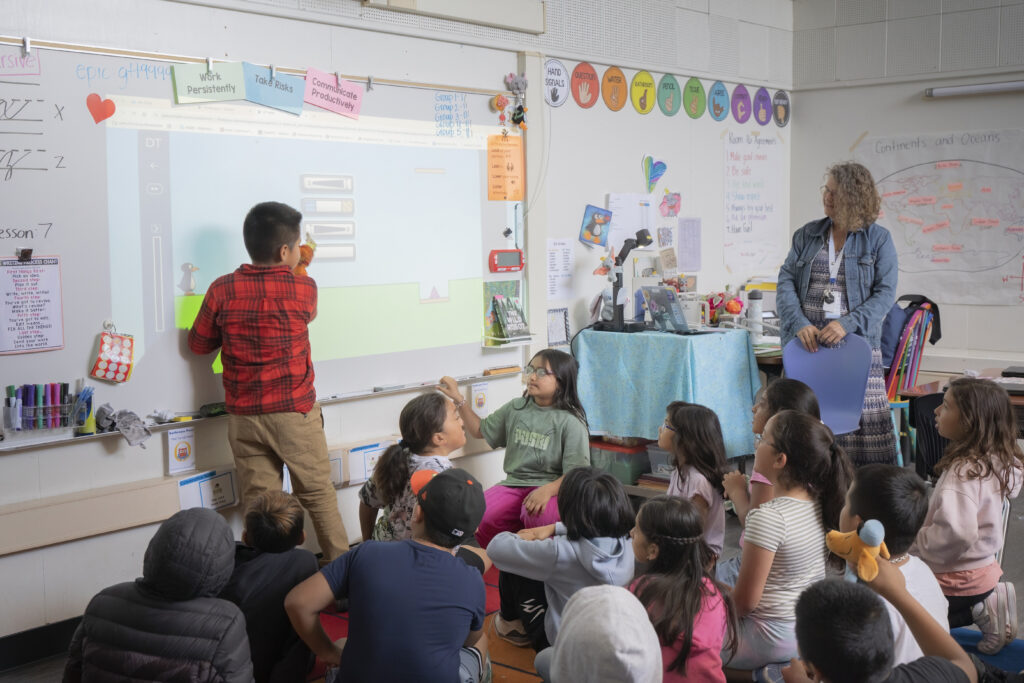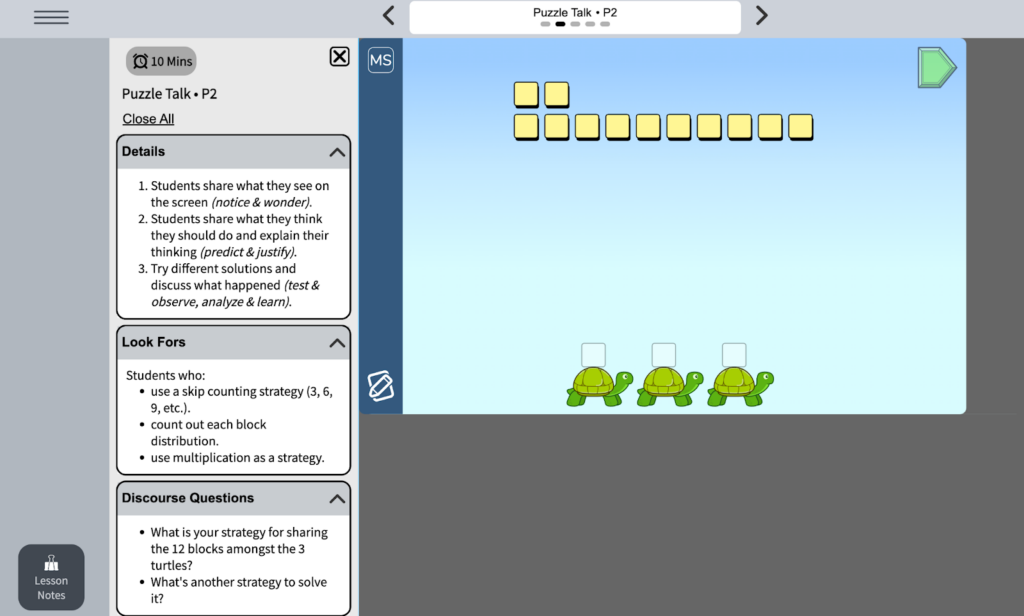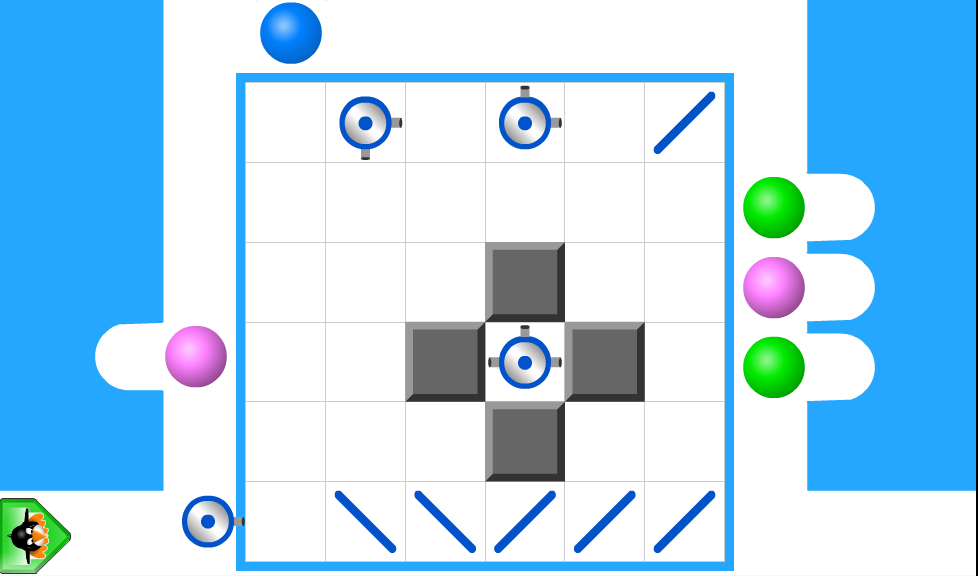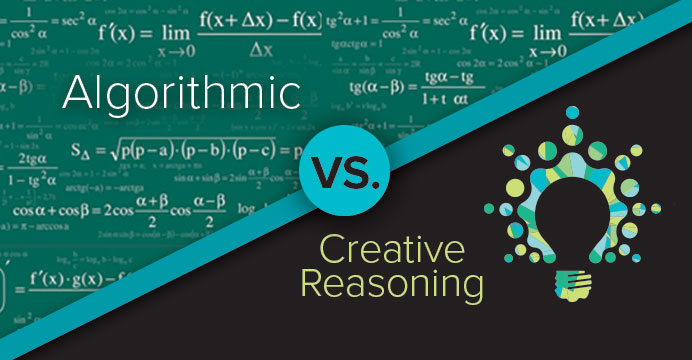
Effective communication in the classroom is more than just clear instruction; it’s about creating an environment where students are empowered to express their ideas, challenge their thinking, and collaboratively solve problems. Great teachers don’t just communicate to students—they cultivate a classroom culture where communication is reciprocal, analytical, and student-driven.
One powerful strategy that helps educators reach this level of excellence is the use of ST Math Puzzle Talks. These interactive math discussions go beyond rote problem solving, offering a platform where students explore challenging puzzles, share diverse strategies, and engage in mathematical discourse. Let’s examine how Puzzle Talks not only align with but elevate key components of teacher excellence, transforming classrooms into a dynamic, student-centered learning environment.
Creating Space for All Voices
Establish classroom practices that encourage all students to communicate safely and effectively using a variety of tools and methods.
Puzzle Talks make room for every learner to contribute. Each session revolves around a visual puzzle from ST Math, free of language barriers, which levels the playing field for all learners. Students communicate ideas through visual reasoning, gesturing, drawing, and verbal explanations, reinforcing an inclusive environment where every student feels safe to participate. Whether through digital tools like interactive whiteboards or peer-to-peer discussion, students learn to articulate thinking without fear of being “wrong.”
Turning Misunderstandings into Discovery
Use possible student misunderstandings at strategic points in lessons to highlight misconceptions and inspire exploration and discovery.

One of the most powerful moments in a Puzzle Talk is when a student shares a partially correct or incorrect strategy. Instead of stepping in with the right answer, teachers can use the puzzle to test the idea, and ask the class:
“What do you notice?”
“What would you change?”
This encourages students to analyze errors, reflect on concepts, and engage in constructive struggle. Misunderstandings are reframed as opportunities for deeper learning, inspiring students to refine their thinking collaboratively.
Clear and Coherent Explanations Through Visual Reasoning
Provide explanations that are clear and coherent and use verbal and written communication that is clear and correct.
ST Math is built on the principle of visual learning. Teachers facilitate student discussion, leveraging students’ input to clarify concepts and break down puzzles into comprehensible components. During Puzzle Talks, students must explain how they solved a puzzle and why their approach works. These conversations demand clear, precise communication—a skill that benefits students across all academic disciplines.
Elevating Questions to Inspire Deeper Learning
Ask questions at the creative, evaluative, and/or analysis levels that require a deeper learning and broader understanding of the objective.
The open-ended nature of Puzzle Talks naturally pushes discussion to higher-order questioning. Instead of asking “What’s the answer?” teachers pose questions like:
“Can you find another way to solve it?”
“Why do you think that approach works?”
“What happens if we change this part of the puzzle?”
These kinds of questions provoke deeper thinking and broader understanding. They help students connect mathematical concepts across contexts. The built-in lesson notes for the teacher house the directions, discourse questions, and student “look-fors” for real-time support while delivering the lesson.

Letting Students Take the Lead
Skillfully provoke and guide discussion to pique curiosity and inspire student-led learning of meaningful and challenging content.
In a well-run Puzzle Talk, the teacher steps back so students can step up. Students lead the discourse, pose questions to each other, and debate strategies. The teacher guides with purposeful prompts and carefully balanced wait time, ensuring all students have the opportunity to contribute. Over time, students internalize this structure and drive their own learning.
Final Thoughts: Puzzle Talks as a Bridge to Mastery
The journey to becoming a distinguished educator in communication is not about mastering a script; it’s about empowering students to engage, question, and explain their thinking. ST Math Puzzle Talks offer a research-proven, highly effective structure to do just that. By embedding this practice into your daily routine, you are not only improving student outcomes, you’re aligning with the highest standards of professional teaching.
Let the puzzles spark the conversation, and let your students’ voices lead the way.




